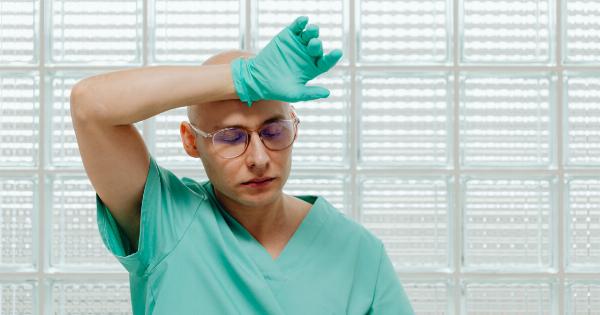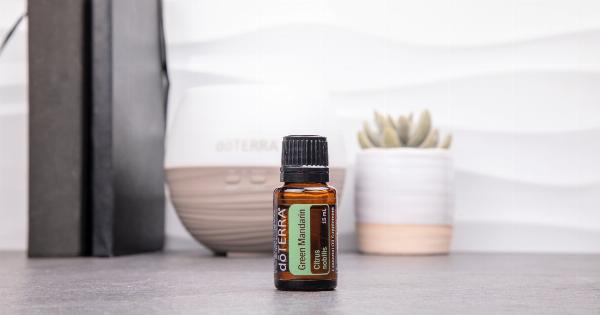Excessive sweating, also known as hyperhidrosis, is a condition characterized by abnormally increased perspiration beyond what is required for thermoregulation.
It affects millions of people worldwide, causing physical discomfort and psychological distress. In this article, we will delve into the science behind excessive sweating, examining its causes, effects, and potential treatment options.
What Causes Excessive Sweating?
Sweating is a natural physiological process that helps regulate body temperature. When the body heats up, the sweat glands produce sweat, which evaporates from the skin and cools the body down.
However, individuals with hyperhidrosis experience overactive sweat glands, leading to profuse sweating even under normal conditions.
The exact cause of primary hyperhidrosis, which is not attributed to an underlying medical condition, remains unknown. However, several factors are believed to contribute to its development.
Research suggests that it may have a genetic component, as it often runs in families. Additionally, abnormalities in the central nervous system, which controls sweating, may play a role.
In secondary hyperhidrosis, excessive sweating is triggered by an underlying medical condition or medication. This can include hormonal imbalances, such as those experienced during menopause or thyroid disorders.
Certain drugs, such as antidepressants and opioids, can also lead to increased sweating as a side effect.
The Science Behind Sweating
To better understand excessive sweating, it is essential to examine the science behind the sweat production process. Our bodies have two main types of sweat glands:.
Eccrine Sweat Glands
Eccrine sweat glands are distributed throughout the skin on our bodies and play a crucial role in regulating body temperature. They are particularly abundant on the palms of our hands, the soles of our feet, and the forehead.
These glands produce watery sweat, primarily composed of water and electrolytes, including sodium and chloride. When sweat evaporates from the skin, it helps to dissipate heat and cool the body.
Apocrine Sweat Glands
Apocrine sweat glands, on the other hand, are found in areas that have hair follicles, such as the armpits and groin. Unlike eccrine glands, apocrine glands secrete a thicker, milky sweat that contains proteins and lipids.
This type of sweat is odorless, but the bacteria on our skin can break it down into compounds responsible for body odor.
While both types of sweat glands contribute to overall sweating, excessive sweating primarily involves eccrine glands.
The Effects of Excessive Sweating
Excessive sweating can have both physical and psychological effects on individuals experiencing it. From a physical standpoint, profuse sweating can lead to discomfort, skin irritations, and infections.
It can also interfere with daily activities and cause embarrassment or social anxiety.
Psychologically, hyperhidrosis can significantly impact a person’s quality of life, self-esteem, and mental well-being.
Individuals may become self-conscious about their excessive sweating, avoiding social situations or wearing heavy clothing to conceal the problem. This can lead to social isolation and feelings of depression or low self-confidence.
Treatment Options for Excessive Sweating
Fortunately, several treatment options are available to manage excessive sweating and improve the quality of life for those affected:.
1. Topical Antiperspirants
The first line of defense against excessive sweating is often over-the-counter or prescription-strength antiperspirants. These products contain aluminum salts that block sweat ducts, reducing the amount of sweat released onto the skin’s surface.
2. Oral Medications
In some cases, oral medications such as anticholinergics may be prescribed to decrease sweating. These medications work by inhibiting the activation of sweat glands, reducing perspiration.
However, they may come with side effects, such as dry mouth and blurred vision.
3. Botox Injections
Botox injections, commonly used for cosmetic purposes, have also proven effective in treating hyperhidrosis.
When injected into specific areas, such as the armpits, Botox blocks the release of a chemical that signals sweat production, thereby reducing sweating in the treated area. Results typically last for several months before additional injections are needed.
4. Iontophoresis
Iontophoresis is a treatment option that utilizes a low electrical current to temporarily disrupt sweat gland activity. It involves placing affected body parts, such as the hands or feet, into water while a gentle electrical current is applied.
Regular treatments can help reduce excessive sweating, but the procedure may need to be repeated every few days or weeks.
5. Surgical Interventions
In severe cases of hyperhidrosis that are unresponsive to other treatments, surgical interventions may be considered.
Thoracic sympathectomy, a procedure that involves cutting or clamping specific nerves responsible for sweating, can provide long-term relief. However, as with any surgery, it carries risks, and potential complications should be carefully considered.
Conclusion
Excessive sweating, or hyperhidrosis, is a condition that affects many individuals worldwide. While the exact causes may vary, the science behind sweat production provides a foundation for understanding this phenomenon.
By exploring the underlying mechanisms, researchers and healthcare professionals can develop effective treatment options to alleviate the physical and psychological burden imposed by excessive sweating. Whether through topical treatments, medications, or surgical interventions, individuals with hyperhidrosis can find relief and regain control over their lives.





























